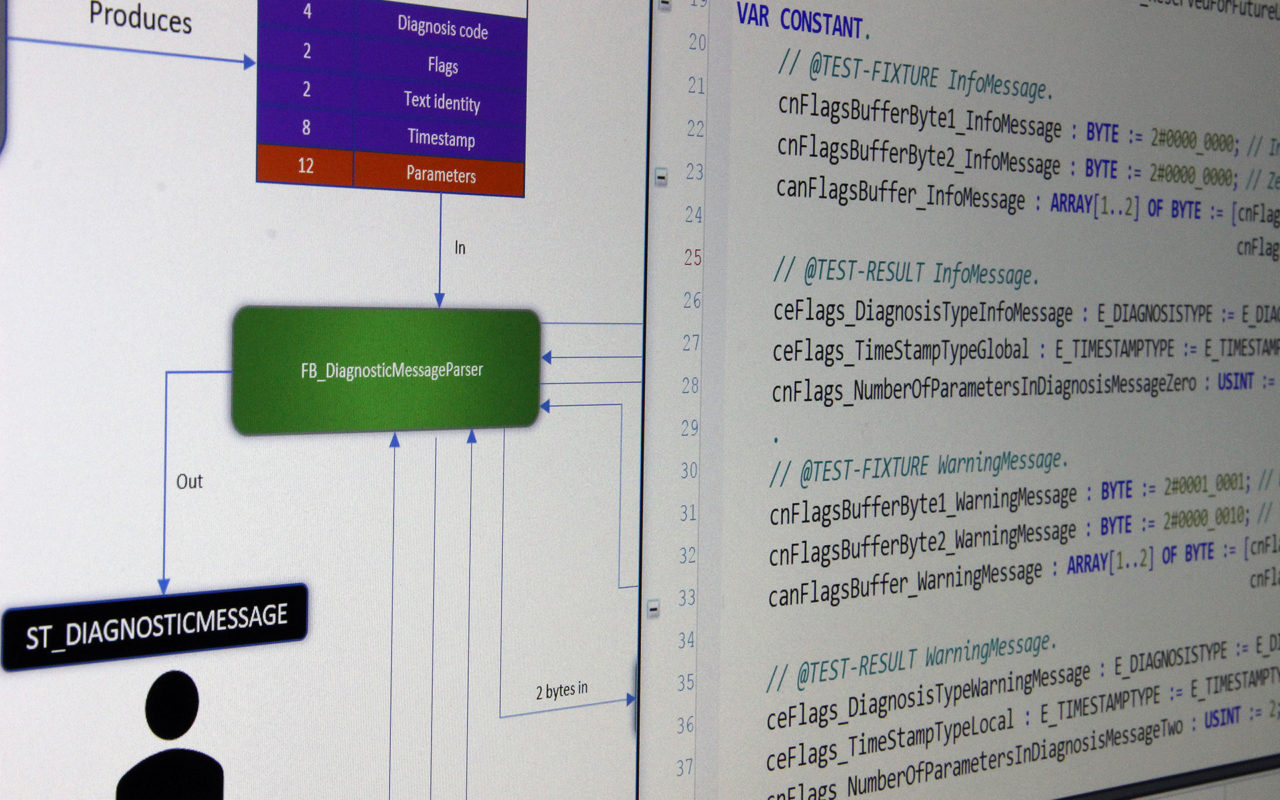 In part five of these series we started the implementation of the function blocks that we previously have done unit tests for. As we have our tests, we could verify that our newly implemented code did what it is supposed to do, and thus we made our code pass the tests. What we’ve got left is to do the implementation for three of the remaining function blocks. Once this is done, we have implemented all the required functionality that we’ve declared that our unit tests require us to.
In part five of these series we started the implementation of the function blocks that we previously have done unit tests for. As we have our tests, we could verify that our newly implemented code did what it is supposed to do, and thus we made our code pass the tests. What we’ve got left is to do the implementation for three of the remaining function blocks. Once this is done, we have implemented all the required functionality that we’ve declared that our unit tests require us to.
Test driven development in TwinCAT – Part 5
 In the last post of the series of unit testing in TwinCAT we finalized our unit tests, thus creating the acceptance criteria for the expected functionality for our function blocks. Now it’s time to do the actual implementation of the function blocks that we described in part 2 of these series. As we have our unit tests finished, we can anytime during our development run them and check whether the implemented code passes the tests.
In the last post of the series of unit testing in TwinCAT we finalized our unit tests, thus creating the acceptance criteria for the expected functionality for our function blocks. Now it’s time to do the actual implementation of the function blocks that we described in part 2 of these series. As we have our unit tests finished, we can anytime during our development run them and check whether the implemented code passes the tests.
Test driven development in TwinCAT – Part 4
 In the previous post we defined the general layout of our unit tests, and also did the implementation of the tests for two of the five function block that we’re going to use to verify the functionality of parsing IO-Link events. What we’ve got left is to create test cases for the parsing of the text identity and the timestamp of the diagnostic event. Then we also want to have a few tests that closes the loop and verifies the parsing of a complete diagnosis history message.
In the previous post we defined the general layout of our unit tests, and also did the implementation of the tests for two of the five function block that we’re going to use to verify the functionality of parsing IO-Link events. What we’ve got left is to create test cases for the parsing of the text identity and the timestamp of the diagnostic event. Then we also want to have a few tests that closes the loop and verifies the parsing of a complete diagnosis history message.
Test driven development in TwinCAT – Part 3
 In the last post of this series we were looking at a use case for a certain set of functionality, more specifically creating parser function blocks for the handling of IO-Link events. The result was a series of function blocks with defined input and output. In this post we’ll create the unit tests that will use the function blocks that we’ve started doing. Naturally, when defining the tests they will all fail as we don’t have the implementation code ready yet.
In the last post of this series we were looking at a use case for a certain set of functionality, more specifically creating parser function blocks for the handling of IO-Link events. The result was a series of function blocks with defined input and output. In this post we’ll create the unit tests that will use the function blocks that we’ve started doing. Naturally, when defining the tests they will all fail as we don’t have the implementation code ready yet.
Test driven development in TwinCAT – Part 2
 In my previous post I explained some of the benefits of using test driven development (TDD) while developing PLC software. This post is the second part of a series of seven, where we will look at a real use case scenario of writing test cases prior to doing the actual implementation. The scenario which I thought would be good for this is by creating a parser for IO-Link events. Shortly, IO-Link is a standardized point-to-point serial communication protocol used to communicate with sensors and/or actuators. It is not a fieldbus, but only takes care of the communication to the end device. As it’s a fully digital protocol that on top of process data also supports services such as events and parameterization, it’s standing well prepared for the Industry 4.0 thinking. One of the functionalities of IO-Link devices is that they can fire off events to the IO-Link master to notify that something has happened, for instance an alarm that something is wrong. To integrate these IO-link devices (slaves) into your EtherCAT network you need an IO-Link master, which usually allows you to connect 4 or 8 IO-Link slaves.
In my previous post I explained some of the benefits of using test driven development (TDD) while developing PLC software. This post is the second part of a series of seven, where we will look at a real use case scenario of writing test cases prior to doing the actual implementation. The scenario which I thought would be good for this is by creating a parser for IO-Link events. Shortly, IO-Link is a standardized point-to-point serial communication protocol used to communicate with sensors and/or actuators. It is not a fieldbus, but only takes care of the communication to the end device. As it’s a fully digital protocol that on top of process data also supports services such as events and parameterization, it’s standing well prepared for the Industry 4.0 thinking. One of the functionalities of IO-Link devices is that they can fire off events to the IO-Link master to notify that something has happened, for instance an alarm that something is wrong. To integrate these IO-link devices (slaves) into your EtherCAT network you need an IO-Link master, which usually allows you to connect 4 or 8 IO-Link slaves.
Test driven development in TwinCAT – Part 1
Test driven deve lopment (TDD) doesn’t seem to be all too common among TwinCAT-developers, which is a shame. From my experience, TDD has a strong foothold everywhere among developers, but TwinCAT? Not so much. And I don’t blame them. There are TDD frameworks for C++, C#, Ada, Python and basically any other language and/or development environment. Do a Google search on the web on any programming language/IDE and TDD and you get thousands of results. Do the same for TwinCAT and you’re on your own.
lopment (TDD) doesn’t seem to be all too common among TwinCAT-developers, which is a shame. From my experience, TDD has a strong foothold everywhere among developers, but TwinCAT? Not so much. And I don’t blame them. There are TDD frameworks for C++, C#, Ada, Python and basically any other language and/or development environment. Do a Google search on the web on any programming language/IDE and TDD and you get thousands of results. Do the same for TwinCAT and you’re on your own.




